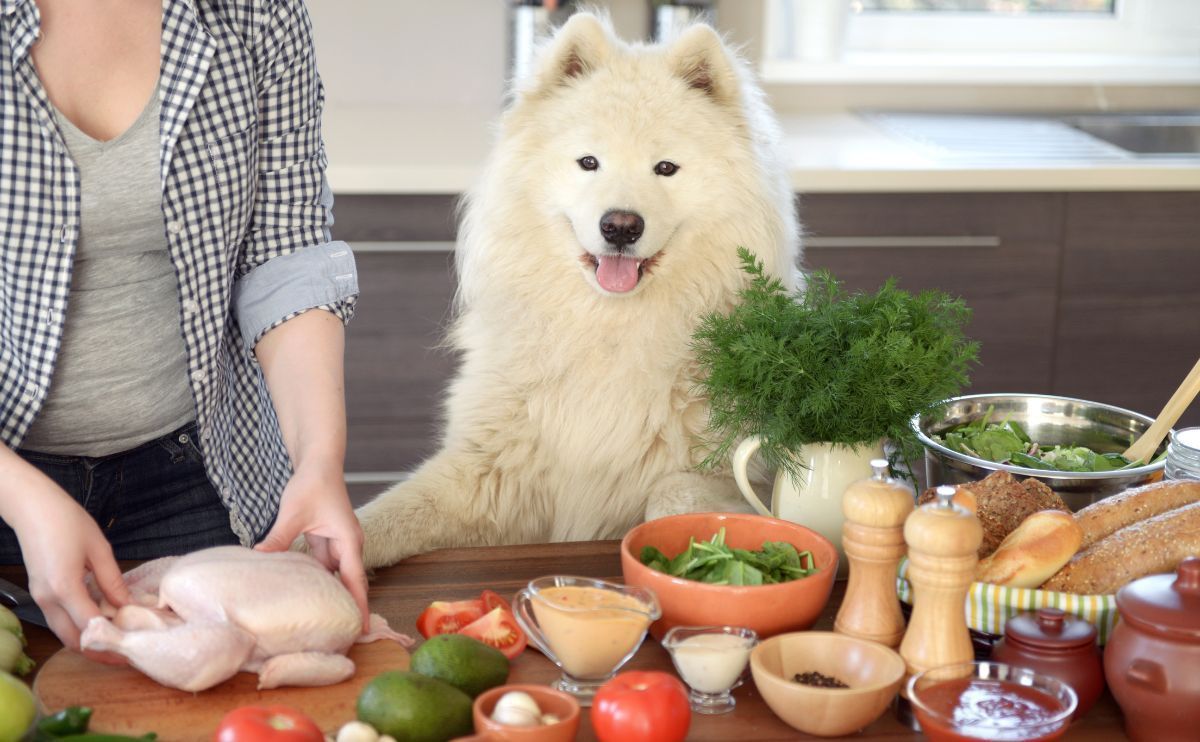Your dog’s diet plays a crucial role in their health and overall well-being. As a caring owner, you probably wonder: what is the best type of food for my dog?
Kibble, wet food, or homemade food, there are several options available, but how do you choose the best one? Let’s examine the advantages and disadvantages of each type of dog food to help you determine the best diet for your four-legged companion!
Taking care of their diet also means taking care of their health, but it’s not everything! #
Ensuring your dog’s diet is essential for their health, but it’s not always enough. To guarantee optimal well-being for your companion, it’s important to monitor all aspects of their health and activity.
That’s where the Minitailz by Invoxia comes in! In addition to quality food, you can rely on this smart dog tracker to monitor your dog’s activities and ensure they get enough exercise. With detailed data on their movements, Minitailz helps you adjust their walks and playtime to keep them fit, as well as monitor their meal intake.
Add to that heart and respiratory health monitoring, and you have the perfect device to keep your dog healthy!
Why Choose Dog Kibble? #
Dog kibble is the most popular food option, and for good reason. Easy to store, convenient to serve, and generally well-balanced nutritionally, they offer many advantages.
✔️ Advantages of Dog Kibble #
- Convenience: Kibble is easy to serve and requires no preparation. It can be easily stored at room temperature and doesn’t spoil quickly.
- Balanced Nutrients: Dog kibble is designed to provide a complete diet, with ideal proportions of proteins, fats, carbohydrates, and vitamins.
- Dental Health Support: Kibble helps reduce dental plaque thanks to its crunchy texture, contributing to better oral hygiene.
❌ Disadvantages of Dog Kibble #
Despite their many advantages, dog kibble also has some drawbacks to consider:
- Lack of Moisture: Unlike wet food, kibble contains no water, which can be an issue for dogs that don’t drink enough water.
- Digestive Problems: Some lower-quality kibble can be difficult to digest, causing gastrointestinal issues in some dogs.
Another common question when it comes to dog kibble is: should I choose kibble with or without grains? The question is not so simple, and opinions vary. But don’t worry, we help you choose between kibble with or without grains on our blog!

Wet Food for Dogs: A More Appetizing Alternative? #
If your dog seems reluctant to eat kibble or has difficulty chewing, wet food for dogs can be an excellent alternative. It is more appetizing for many dogs and can be beneficial for those with dental issues.
✔️ Advantages of Wet Food for Dogs #
- Hydration: Wet food contains a lot of water, which helps keep your dog well-hydrated, especially if they don’t drink enough water.
- More Appealing Taste: For picky dogs, wet food is often more flavorful, which can stimulate appetite.
- Ideal for Older or Sick Dogs: Older dogs or those with dental problems may find it easier to eat wet food, which doesn’t require intensive chewing.
❌ Disadvantages of Wet Food for Dogs #
- Less Convenient: Unlike kibble, wet food must be refrigerated once opened and has a shorter shelf life.
- Higher Cost: In general, wet food is more expensive than kibble, which can become a limiting factor for some owners.
Homemade Food: A Natural Option? #
Homemade food for dogs is another popular option among owners concerned about their pet’s health. By offering a home-prepared diet, you have complete control over the ingredients and quality of what your dog eats.
✔️ Benefits of Homemade Food for Dogs #
- Total Control of Ingredients: You can choose fresh and natural products, without preservatives or artificial additives.
- Adapted to Specific Needs: If your dog has food allergies or specific needs (e.g., a diet richer in proteins or fibers), homemade food allows for total customization.
- Healthier Option: Many owners prefer the idea of feeding their dog fresh and natural ingredients, considered healthier than processed products.

❌ Disadvantages of Homemade Food #
However, preparing homemade meals for dogs also presents some challenges:
- Time and Effort: Preparing homemade food requires time, planning, and knowledge of canine nutrition to ensure the diet is balanced.
- Difficulty Balancing Nutrients: One of the main challenges of homemade feeding is ensuring all necessary nutrients (vitamins, minerals, fatty acids) are present in sufficient quantities.
Which Dog Kibble to Choose? #
There are many brands of dog kibble, but it’s important to choose well to ensure optimal nutrition for your companion.
Criteria for Selecting Dog Kibble #
When choosing dog kibble, here are the main criteria to consider:
- Quality Ingredients: Look for kibble containing quality protein sources, such as chicken, beef, or fish. Avoid kibble containing animal by-products or low-quality ingredients.
- Adapted to Your Dog’s Needs: Kibble should be chosen based on your dog’s age, size, and specific needs. For example, a puppy will need special puppy kibble, while a senior dog will need kibble adapted to the needs of older dogs.
- Without Artificial Additives: Favor kibble without preservatives, colorings, or artificial flavors, which can be harmful to your dog’s health in the long term.
How to Combine Kibble, Wet Food, and Homemade Food? #
To offer your dog a varied and balanced diet, some owners choose to mix kibble with wet food or homemade meals.
By combining dog kibble, wet food, and homemade food, you can offer your dog a rich and diverse diet. This allows you to combine the advantages of each type of food while meeting your dog’s nutritional needs.
What is the Ideal Meal for My Dog? #
There is no one-size-fits-all solution for your dog’s diet. However, it is considered that it should consist of 70% meat, 25% fruits and vegetables, and only 5% grains.
Ultimately, each type of food, whether it’s dog kibble, wet food, or homemade food, has its advantages and disadvantages. The choice will depend on your dog’s specific needs, your preferences as an owner, and your budget. However, regardless of the type of diet you choose, it’s important to ensure your dog’s food is balanced, of quality, and adapted to their needs. By following these tips, you can offer your dog a healthy and nourishing diet!

